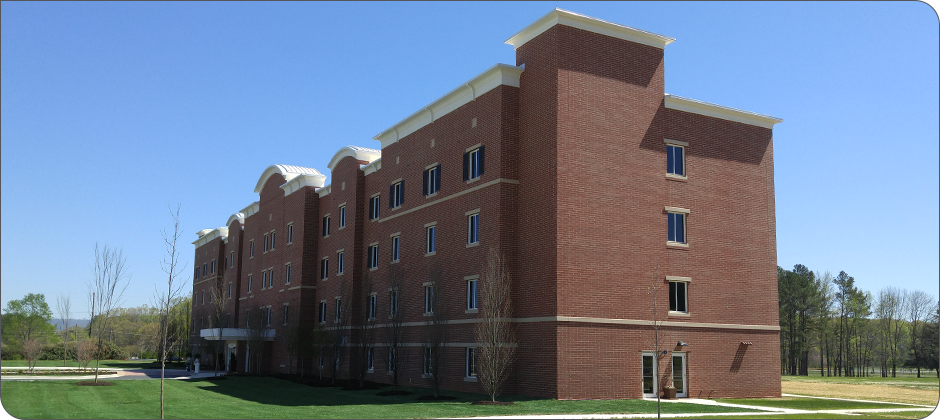In your 20s, a big change is chalked up to youthful ambition (+ can be bounced back from). That haircut, Android over Apple, staying in 40-person-room hostels while backpacking through Europe – you live + learn.
For an established firm, it’s a little different. Entering a new market, implementing a new technology or material – it can be a big change. However, successful businesses don’t jump into something new because it’s popular, inexpensive or an “experience;” innovations + evolutions must align with current + future initiatives and are taken after plenty of research + preparation.
Entering the federal market sector was just that – a result of research + strategic planning, and in alignment with what we’re already really good at (delivering smart structures in diverse markets). It’s a market sector that we believe we can add value to by enhancing our communities at home, across the country + abroad.
How’d we get here?
A giant opportunity appeared: the Bipartisan Infrastructure Investment and Jobs Act. Anyone active in the federal market sector (+ anyone who followed the news in 2021) already knows the ins + outs of the infrastructure bill, so we won’t bore you with the details. If you’re new to the federal market sector, it’s a must-read.
The federal market sector had been on our radar for quite a long time, but the Bipartisan Infrastructure Investment and Jobs Act had us jumping in head-first.
Now, when it comes to government projects there are absolutely specific skills + certifications necessary.
Agencies have their own design manuals + standard specifications.
Review processes + project requirements are different than private sector clients.
And don’t get us started on all the acronyms + terminology – it’s like learning a new language.
However, from a technical design perspective, almost all of the government’s projects fall into a market in which we’ve already been designing for decades. Schaefer provides structural engineering for 10 markets: industrial, education, entertainment, civic, healthcare, housing, parking, retail, hospitality + office – and the government has a need for structures that fit into most of them.
While you wouldn’t be alone if when you think of a federal building, you think of the Pentagon, Capitol Building or Army barracks, the government needs so much more than that, not only for government + defense purposes, but to also care for the families that live on + near its bases. They need commissaries (grocery stores), unaccompanied personnel housing (hotels) + elementary schools, to name a few. And, break down what those big federal buildings really are:
- Pentagon | office building
- Capitol Building | civic building
- Army barracks | hospitality/residence hall

To illustrate the vast building type that falls under the term “federal market sector,” one of our first federal projects (+ the first CLT building to go through the United States Army Corp of Engineer’s rigorous review process) was a Candlewood Suites at Redstone Arsenal. A HOTEL. We’ve been involved in hundreds of hospitality projects and are a thought leader in mass timber design. We used all of that experience to bring a lot of value in a market sector “new” to us.
That’s what we mean about taking a big step to enter a new market sector, but in a step that aligns with what we’re already really good at, and that aligns with our own firm growth plan.
How do you enter a new market sector?
Step 1 | do your research
- Network, network, network. Involvement with the Society of American Military Engineers (SAME) is a must. Learn about best practices, build your opportunity pipeline + network with your peers. We recommend engaging at the local + national levels. We just got back from the SAME Small Business Conference (national), and can’t wait to ring in the holidays at the Kittyhawk Post (local) on December 7, 2023.
- The APEX Accelerators offer assistance in navigating the ins + outs of the federal market: they’re the ones who would point you to the FAR requirements, connect you with the SBA, tell you about needing to be NIST 800-171 compliant, etc. For those with an Ohio presence, there is an office at Ohio University.
- Do you know if you’re a small business as defined by the federal government? The Small Business Administration can help you figure that out! They can also assist on designations like 8(a) or Service Disable Veteran Owned Small Business (SDVOSB), understand the mentor/protege + Joint Venture options.
Step 2 | do the paperwork
Even though we have the experience, we initially didn’t have the necessary ducks in a row. For us, it was:
- Register our company with sam.gov. We are a small business under the 541330.
- Confirm our financials were FAR compliant.
- Figure out what this CMMC thing is (really no one has that figured out right now, but we made sure we’re NIST 800-171 compliant for DoD contracts).
- Get ready to do SF330s if you haven’t already (not a problem for us, but a real learning curve if you haven’t).
Step 3 | find your friends
We’re fortunate to already have a number of clients who straddle private, public + federal sectors. They’ve been incredible assets in helping us navigate the federal market sector.
Step 4 | bulk up your resume (on your own + with your friends)
- We’ve looked internally at what we’ve already done with the federal government (like Candlewood Suites Redstone Arsenal).
- We’ve looked at our talent + their past employment experience working with the government.
- We’ve hired new talent that are assets for our private, public + federal work.
- We’ve teamed with clients on private, public + federal work that will show us as a cohesive team on future opportunities.
Step 5 | continuously improve
Continuous improvement is a long-time Schaefer core value, so no big change there. But, it means finding + challenging our staff to earn the knowledge + become thought leaders on the specifics necessary for government work. (You can read about Howard’s blast design experience here.) Like the government itself, it takes time, the right contacts + attendance at the right places to continue to learn more about this market sector full of its own acronyms, procedures + requirements.
What’s next?
We continue to learn + grow to be better partners for our clients. We continue to bulk up our experience + hire incredible people. Two years in, we’re already reaping the rewards of our hard work and can’t wait to see how our progression continues in the next five. We’re looking for new clients + agencies to partner with to continue to deliver smart structures that enhance our communities, locally, nationally + abroad. We believe we can make a difference.
Are you in the federal market sector, or looking for a structural engineering partner with experience across 10 markets? Learn more about our services, experience + market leaders here.





